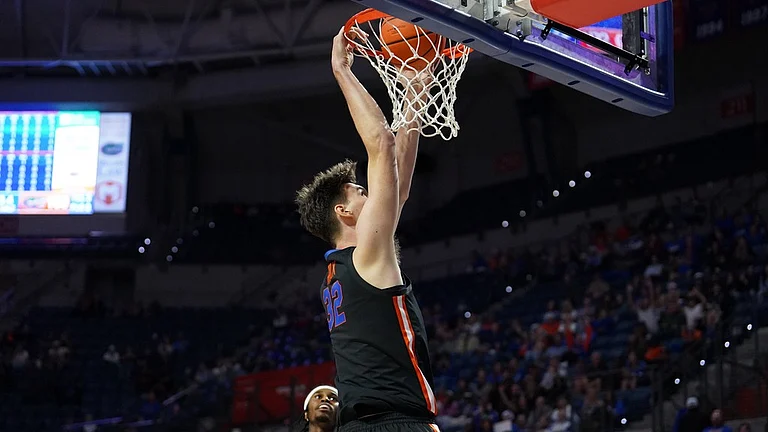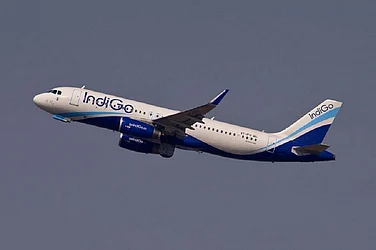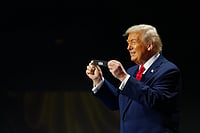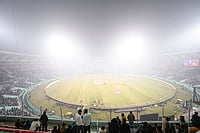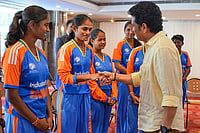Sony, Panasonic, Thomson, Grundig, Samsung, Goldstar. Household names abroad, these transnationals (TNCs) were expected to take the Indian colour TV market by storm, with their entry in 1994 and after. Not a leaf has shaken. Some dismiss it as the calm before the storm. Others, convinced that the Indian majors will hold out against these global brands, think they have spotted some innate resilience in desi industry.
How is it that these TNCs have leapt into Indian waters without setting off so much as a ripple? That too in a segment which offers a high road to the mega Indian consumer durables market? Or is it too early to pronounce a verdict? And if it is, what more can be expected, what will the scenario look like a couple of shakes later?
Of the TNCs, all the post-1993 arrivals put together have managed to garner not more than 10 per cent of the marketshare. The Indian majors, on the other hand, are bracing up to meet competition in the years to come. The four main players—Videocon International, BPL, Philips (a Dutch TNC, but with over a 100 years of history in India), and MIRC Electronics (owner of the Onida brand)—seem to have changed their minds about how they want to be seen and heard in an overcrowded marketplace. They are penetrating the more price-sensitive segments by offering relatively lower prices.
But the resultant higher volumes come with stunted margins. Those who can sustain themselves despite that, by notching up enough sales, will share the podium with leaders from the post-1993 TNC batch in 2000. Though the bookies haven't picked on the winning horse yet, it's obvious enough that the TNCs won't get a walk-over, as was being suggested two years ago. Price is now the name of the game—it's become the four majors' trumpcard. And it's more or less a clear field as the TNCs continue to target the high-end of the market.
"The marketshare of the majors will go down in the future, but volume-wise they will do better," predicts K.S. Raman, secretary-elect at Consumer Electronics and TV Manufacturers Association (CETMA). There does seem to be a lot of room, as is reflected in the confident capacity-addition plans of all the major players. India's colour TV market is expected to show 38 per cent growth in 1995. Interestingly, the largest chunk of that growth comes from the conversion of black-and-white sets purchased after 1982 to colour TVs.
The sales figure of 1.8 million sets in 1995, several quantitative analyses in the industry indicate, will swell to 5 million in the year 2000 (fingers, of course, crossed for the economy to recover). The Indian TV-makers intend to get a good bite of the pie. Says Pronab Sen, advisor, Planning Commission: "There is an attitude change. Indian manufacturers no longer treat the colour TV as a luxury item. Price elasticity of demand in this segment is quite high and the volumes can be raised substantially by price-cutting. It was triggered off by the Government cutting excise by Rs 900 in one shot."
That was in 1992-93, followed by a cut in import duties in 1994-95. Why then does a visit to the dealers today reveal that prices, instead of heading south, were hiked in December 1995? The reason is the fall of the rupee against the dollar, which has hiked manufacturers' costs. "That colour TV prices have remained largely stable over the last three years, untouched by the inflationary pressure means that, effectively, prices have dropped," says S.C. Pandya, editor, CETMA News.
In fact, compared to the 1994 figures, the market-operative prices have dropped in absolute terms also. Consider the prices in the 21" category (the regular-size TV screen). In 21" F&FST (full and flat square tube), the fastest growing segment, the KY series of Onida was priced at Rs 23,000-24,000 till mid-1994. Now, the market-operative price ranges from Rs 18,000 to Rs 20,000. So also for the BPL models in the category. The corresponding models from the newly-arrived TNCs are priced marginally higher. The two Panasonic models, for example, are priced at a little over Rs 23,000 and about Rs 20,000. Says Pawan Kapur, vice-president, National Panasonic India: "The market is getting divided into three segments: premium, popular, and mass." The four Indian majors are primarily into the popular segment, with Videocon getting aggressive in the mass market also.
The TNCs are focusing on the above-25" models, besides the 21"-2R category. Adds Kapur: "Our thrust is on the high-end. Besides 21"-2R, we're going in for the 29" category. Even the 14" model (bottom-rung size) of Panasonic costs Rs 13,500-13,900 (considerably higher than the Indian models available at Rs 9,000 to 11,000)." Says Prem K. Nair, general manager, sales and marketing, Sony India: "The company may find it impossible to address certain low-price segments. But we're con-fident the market would accept that Sony doesn't cater to these segments elsewhere in the world either. Price is important but not important enough if we can't offer the technology and quality that the market expects from Sony." Sony's 29" model is priced at Rs 60,000. The company is also the only one which sells the 34" model—the largest screen size available currently in India—with a price tag of slightly over Rs 1,00,000, making it the most expensive television sold in the country.
The crucial issue the global brands have to sort out is how much of a premium they can command without being relegated to the status of niche brands. Significantly, when Sony pumped up its prices recently by Rs 2,000, the demand fell so significantly that the company had to roll back the prices. Of course, they are all emphatic that they are justified in pricing higher. They claim this is in sync with the perceptible quality difference they offer, and the brand equity they enjoy. The higher prices sought by the new TNCs can also be traced to their import content being over 95 per cent. Says Raman: "For the Indian majors, about 80 per cent of the bill of material is Indian—the reason why they have been able to cut costs." The newcomers too intend to cut costs by manufacturing in India and reducing the import content. But for now their assumption seems to be that for high-quality status-denoting international brands, consumers are willing to part with a thousand—or two—rupees more. Market statistics, however, suggest this assumption may not be as true as the Japanese and European giants would like to believe (see box).
Among all the post-1993 brands, Sony definitely has the strongest brand equity, and is spreading its wings with a 1,000-plus dealership network already in place. Panasonic is not far behind with 800 retail outlets primarily in the north and the west, and a target of an all-India presence by this September. Yet, the dealer network of the Indian manufacturers, who already have about a 10-year headstart on home turf, will remain a strength the TNCs won't be able to match for at least another two or three years.
"Colour TV is a very trade-led category. Unless manufacturers buy shelf-space, they won't be seen," says Gopinath Menon, media director, Chaitra Leo-Burnett. Product visibility at the customer level is absolutely vital for TV makers. Says Raman: "The Indian market and industry are different from those in other South Asian countries such as Malaysia, Thailand and Singapore, where TNCs just went and plonked themselves. The Indian majors have a solid infrastructure in the form of market distribution, technological absorption, and a service network."
A fierce battle for attention is already on at the dealer level. Dealers are being showered with attractive incentives such as trips abroad, and gifts such as cars and gold, or are being indirectly helped to boost sales by giving gifts to the buyer. The TNCs' hope lies in that, as the market matures, the dealer's role will become less significant. But as things stand currently, trade push factors have the upper hand over consumer pull.
That consumer pull will come from an inherent strength the TNCs have: their deep pockets which allow lavish ad-spends and state-of-the-art technology backed by strong R&D. "We offer contemporary products in India, the ones we have abroad," says Kapur. "Samsung, the Korean giant, has introduced in India its World Best TV model, which it launched in the US just two months back," says Sanjay Saran, executive secretary, Electronic Component Industries Association (ELCINA). Sony flaunts its Trinitron picture tube technology which no one has access to. Indian companies have neither the money nor the R&D to match this kind of technology though they do have technical tie-ups to fall back on. BPL has Sanyo, Videocon has Toshiba, Onida has JVC of Japan.
And they are raising advertising budgets dramatically. Videocon recently went in for a stretch of 12 pages of advertisements in leading national magazines, and sponsoring the Screen film awards. Onida has set up its own set of TV awards, christened Pinnacle. Philips, it is rumoured, has raised its advertising budget by 100 per cent for 1996. BPL has roped in Amitabh Bachchan, for a whopping Rs 25 crore, to endorse its products.
The TNCs are expected to add on to their advertising budgets gradually. In 1995, the adspend for Panasonic (which Kapur declines to divulge) was Rs 15-20 crore, according to industry sources. "Sony spent about Rs 10 crore on advertising in 1995 (this includes advertising for Handycam, Sony's camcorder)," says Nair. Samsung, which is aiming at a country-wide presence, has reportedly allocated Rs 20 crore for 1996.
These figures are in tune with the huge ambitions the TNCs hold for the Indian consumer electronics market. Panasonic is aiming at a 20 per cent marketshare by 2000. "Sony's objective is to get 30 per cent as soon as possible," says Nair. But he also believes that "the market is growing at a very healthy pace and there is enough room in it for all the players." But, says Saran of ELCINA, "we expect the TNCs to capture only 20 per cent of the market at the end of 1997-98"—just two years from 2000. Raman's estimate—around 26 per cent—is also far lower than the marketshare the global biggies are expecting to grab.
Smaller TNC players, which are expected to get 3-4 per cent of India's market, have so far been having mixed fortunes. The $3.4-billion Thomson Consumer Electronics, which has tied up with the Madras-based Dyna-vision (owner of the no-longer-marketed Dyanora brand) has 12 per cent of the south Indian market already. Grundig of Germany has tied up with the Madras-based Solidaire. Sharp's equity in Kalyani Sharp, owner of the Optonica brand, has gone up to 51 per cent. Some are lying low. LG Electronics, a Korean company and owner of the Goldstar brand has fallen out with its Indian partner, Besta-vision. Akai Electric, in partnership with Baron International (owner of the Bush brand), is hardly heard of.
The big three are surprisingly slow but moving. Samsung, which has set up a joint venture with the Ahmedabad-based Reasonable Computer Solutions, has set the ball rolling for the first phase of its production unit at Dharuhera, Haryana, at a cost of Rs 50 crore for 3 lakh colour TVs and audio systems. Sony, the only TNC to have a 100-per cent subsidiary in India, is to invest $16 million in the next three years. It also has a plant at Dharuhera. The $69-billion Japanese major, Matsushita (the Panasonic brand-owner), has tied up with Salora International for production.
On the Indian side, the middle order, catering primarily to the small town segment, is expected to end in a shambles. Texla, Konark, Weston, Uptron, Crown, Beltek and the like are names that may soon disappear from the consumer's mind. "The middle rung will finally end up as surrogate manufacturers and subcontractors," says Saran.
As far as the current market leaders are concerned, the heaviest bets are being placed on BPL and Philips. However, in the first six months of the year, all the four biggies have shown an anaemic rise in net profits despite notching up higher sales. This is a direct result of price warriorship and soaring advertising and sales promotion budgets. For the industry as a whole, if the downswing in the economy persists, all those happy projections will look over-ambitious a year from now. A further setback for the TNCs who even after a year of announcing their arrival still find themselves holding most of their heavy-duty television sets. Thanks to the new mantra of the Indian TV makers: there ain't no brand image that two-cents-off can't overcome.









